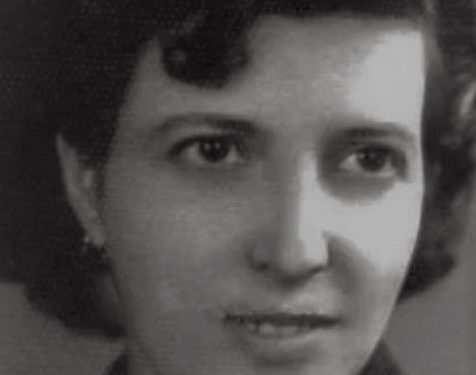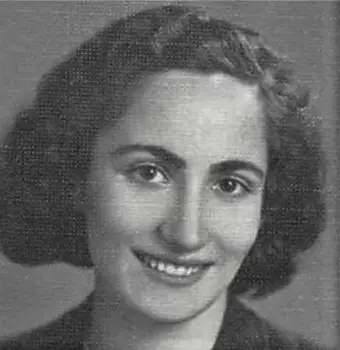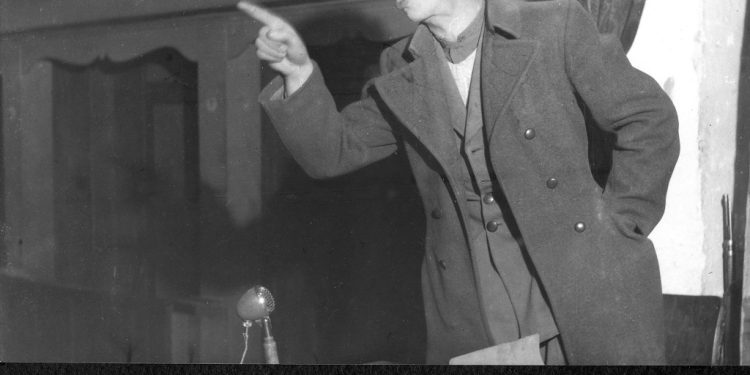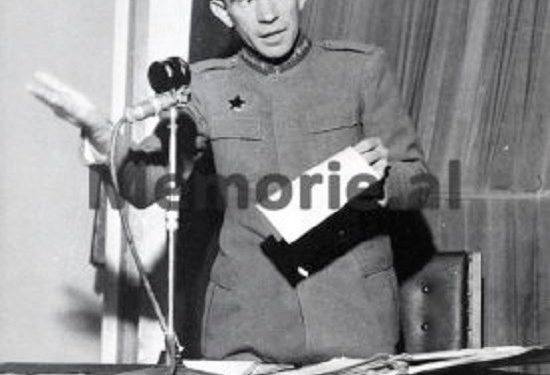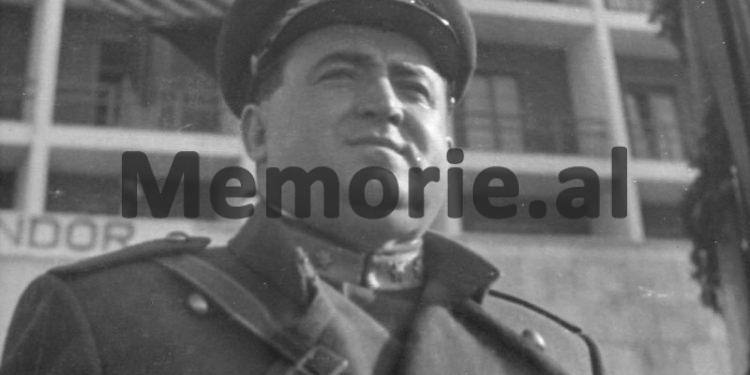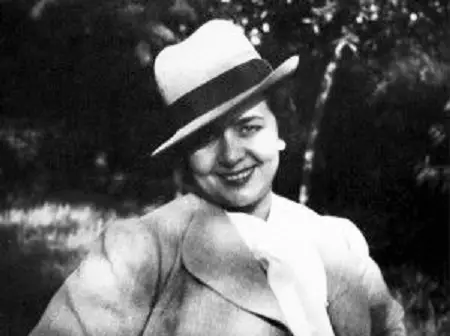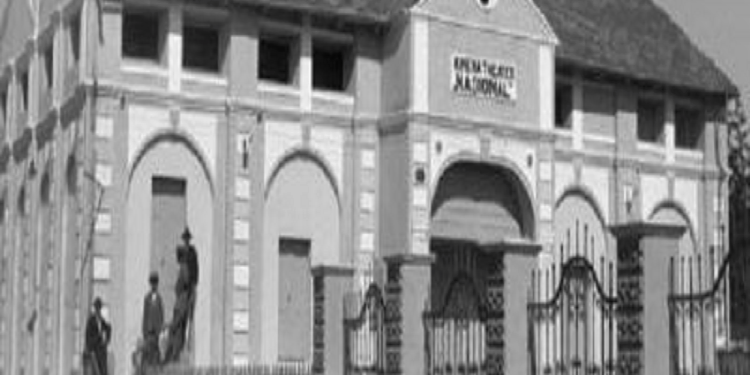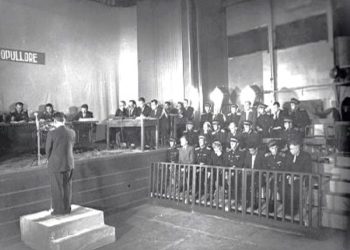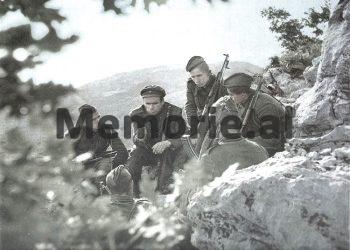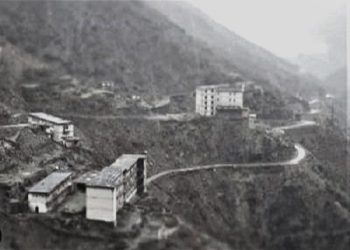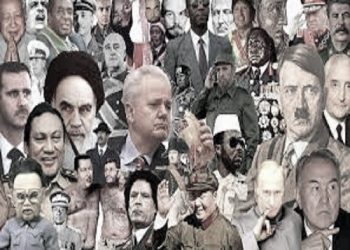From Veli Haklaj
Memorie.al / The group of girls, people with anti-communist convictions, in a meeting they held in October (1945), had raised the need for the organization of girls. Thus, with the help of Nexhibe Taraku (Skender Taraku’s sister), they set up a group consisting of: Nexhibe Taraku, Naske Taraku, Nadire Zekthi, Beglije Diva and two girls with sheets, unidentified. These, before December 2 (1945), held a meeting, where Avdulla Berberi spoke to them. The elements of this group had dispersed due to the fear of arrests and were no longer involved in such activities, with the exception of Nexibe Taraku. This was constantly related to the members of the “Group of Youth” and the “Group of Shyqyri Gjilan”, as will be discussed below.
“Girl Group”
Nexhibja also had a relationship with Myzafer Pipa, with whom she had talked several times on the phone, and these relationships of hers had raised suspicions among the State Security bodies. Lately (autumn 1946), Nexhibeja had started hanging out with another group of anti-communist girls, such as Tefta and Lule Bishqemi, Bukurije Kokona, Margarita Noçka and Gjilberta Basha. These were accompanied and constantly stayed together and their activity was throwing different slogans. In addition to these, Ylli Selenica also collaborated with these anti-communist girls: Petrina Alarupi, Dake Çarçani and Liri Prifti.
“Group of Old People”
In relation to the “Group of Young People”, a group of elderly people (“Group of the Old”) was also identified, consisting of; Shyqyri Gjilani, Osman Reçi, Xhafer Kalaja, Muhamet Preza, Muhamet Pijetori, Qamil Golloberda and Bajram Koçi. These had been organized before December 2 (1945) and had held a meeting, in which Avdulla Berberi had spoken to them. At this meeting, they also took the oath on a flag and a revolver. With Avdullai’s arrest and Shyqyri’s escape to Peshkopi, as a clerk, they had severed ties. When Shyqyriu came back, after being fired, he got in touch with Xhafer Kalana and together they laid out the needs to organize the “Old Group” again.
Shyqyri Gjilani compiled a tract, which Xhafer Kalaja would multiply. In order to print the tract, they had also sought the help of Nexibe Tarak and Abbas Mezin. The State Security bodies were aware of the work that was being done and before the tract circulated, they arrested Shyqyri Gjilan, while Xhafer Kalaja was arrested in Durrës, but escaped from the Security forces, going underground. The members of the group that were left out, no longer stood as a group, but spoke against the Government, when the opportunity arose.
Circle of “Girls of the Female Institute”
In the Women’s Institute, the State Security structures identified a group of girls, consisting of: Tefta Tasi, Vasilika Miça, Vasilika Xhaçka, Drita Durrësi, Alaqi Gjini and Gjyzete Harxhi. They had held a meeting at the house of Arif Stërmas. The one who seemed more active was Tefta Tasi, who held another meeting at Shefki Aliko’s house, where Kondita Goxhomani, Lavdije Pojani and Idajete Libohova participated.
Their job was to spread slogans and they tried to sabotage the work of BRASH (Albanian Antifascist Renewal Union) in schools and disrupt the peace in the classroom. From their movements and meetings, it seemed that they had not had anything organized. This group was controlled by Sigurimi from the inside.
Circle of “Catholic Youth”
There are few young Catholics who were with the Communist Party during the Second World War. They have either been opponents of the National Liberation Movement, or have remained indifferent. In the city of Tirana, the State Security bodies had identified a Catholic Youth Circle that showed activity against the communist regime, who were: Ndue Shato, Palin Derani, Sami Bogdani, Qemal Petrela, Jashar Stringa, Neki Banani, Loni Mirashi, Mikel Pali, Harallamb Lambushi, Tish Berisha, Muharrem Kupi, Alfred Paralla, Nexhat Pepa, Kol Vorfi, Zef Vorfi, Stef Kroqi, Tonin Berisha, etc. All of these were elements that came from the ranks of ‘Balli’ and ‘Legality’, as well as from the layers affected by the various reforms.
As can be seen above, their composition was not only of Catholic elements, but also of other religions. This was due to the fact that, after the establishment of the communist regime in Albania, the Catholic element began to increase as much as possible the circle of disaffected elements, both of these and of other religions. Parin Derani, for his opposing activity at school, was expelled.
He had behind him a circle of opposing elements of the communist regime, consisting of; Mehmet Hajdari, Besim Kazazi, Ali Kazazi, Danush Daca, Hysni Radheshi, Pjerin Muzhani, etc., who came from families of nationalist origin, which were affected by the communist reforms. Their activity at the school was to sabotage the work of BRASH. (Union of Albanian Anti-Fascist Youth).
The members of this circle had connections with Avdulla Berberi’s group. Some of them were related to Father Mushkalla and Don Shtjefen Kurti, from whom they were greatly influenced for their work against the communist regime in power. From the structures of the Security, they were arrested from this district; Parin Derani and Tish Berisha, who were the most active.
From their depositions, it appeared that they did not have organized work, but as opposing elements that they were, they always stayed together and spread different slogans, strongly propagandizing against the communist government. With the arrest of Parid and Tish, the other members of the circle who remained outside felt scared and did not make any move.
“Women’s Circle”
From the data available to the State Security bodies, there were many women in Tirana who spoke against the communist regime and spread different slogans, but they did not have any organized activities. The data was mainly based on suspicions that; Dhorka Dhespoti, Kaliopi Gode, Angja Shkreli, Gliqerina Koço, Ballkeze Mborja, the wives of Beqir Sinani, Ismet Kryeziu, Sami Koka and Thanas Meksit, had something organized.
For this, the Security structures arrested Dhorka Dhespoti, who was more active and who was suspected of being their leader, as she was connected to the Anglo-Americans. Since no compromising facts emerged from Dhorka Dhespot’s depositions, she was released.
Among the women who moved more, was Drita Kosturi, who had gone to Shkodër two or three times and had met with Safete Sokol, Agime Pipa, etc., as well as with members of Myzafer Pipa’s circle, to whom she was engaged at that time. He often talked to him on the phone from Tirana, conversations that had raised the suspicions of the Security structures.
Drita had also gone to Korça, where all those days he stayed there, he was accompanied and hung out with “Doctor Lito’s Circle”. From her movements and meetings, the State Security Bodies suspected that she was trying to connect the anti-communist element of different circles.
Nurie Koculi, too, had seemed active for a while, but then withdrew and did not move at all. Other women who had been more active in spreading the slogans were: Idajete Prodani (wife of Qazim Prodani), who had been in the ‘Balli’ District, Nimika Borshi, Yllka Borshi, Meleqe Ohri, Marije Bumçi, Katushe Maloku, the wives of Dik Can, Sei Matje, Qazim Mullet, etc.
All the work of the “Women’s Circle” consisted of spreading slogans, propaganda against the communist government and leaders. Their origin was from nationalist families who had served the previous regimes, wives of bachelors and wealthy classes hit by the reforms of the communist regime.
Meanwhile, Merita Sokoli, Ylvije Prishtina, Rina Prenga, Polikseni Papa, Qefsere Tirana, Katerina Koma, Taipe Gjylani, Idri Pilkati, etc., were evident in their anti-communist activity and for their connections with the Anglo-Americans.
“Socialist and Theologian Group”
A socialist group that appeared for a while in the movement, in the fall of 1946, was not felt at all, because most of them were arrested, some in the process of Tirana and some later. Of these, Hajro Babameto and Ismail Petrela were arrested in the middle of 1946, which had started moving with some hospital soldiers. Also, the “Group of Theologians”, mentioned in a previous report, no longer existed. It was dissolved as soon as it was formed.
“District of Minorities”
Regarding the “Circle of Minorities”, they had continuous contact with each other, but no organized activity of theirs was found. The main members of this circle were: Kristo and Dhimitri Beja, Vasil Xhai, Marto e Rika, Agjello Abaxhoglu, Dr. Kristidhi, the Llambiri brothers, Sokrat Papai, Stavro Papai, etc. Their activity consisted in spreading different slogans, especially regarding Greece and the minority.
This circle was not felt at all for a while, but in the middle of 1946, in connection with the development of the Peace Conference and the claims of Greece, they had intensified their activity. They were identified as the most active in this district; Mihal Marto, the Llambiri brothers, Loni Pëllumbi, Mihallaq Kalloqiriaqi, Kristofor Harito, etc. In this district, the State Security Organs had penetrated with their man and arrested Mihal Zhango for spreading slogans.
“Circle associated with Anglo-Americans”
A great deal of work against the communist regime in Tirana was done by elements associated with the Anglo-Americans. This circle was quite wide and the representatives of England and the United States of America were connected with different members of this circle. In this district, representatives of various business classes and owners expropriated by the communist regime, former members of the “National Front” and “Legality” contributed.
The members of this circle had connections with almost all the different circles discussed above. The work they did was: They met each other constantly, almost every day, in the cafes “Splendit” and “Berati”, where they commented on the news of different radio stations and spoke and propagated against the government.
They were identified as the source of a large part of slogans against the communist regime and as contacts of foreign informants. The members of this circle, identified as the most active, were: Loni Pëllumbi, Pjetër Gjini, Asti Hobdari, Reis Selfo, Zef Kraja, Gjerq Sulfi, Mihal Kilica, Man Toptani, Niazi Bej Vlora, Medin Kamberi, Qazim Plasa, Sabri Hamzarai, Nard Kraja, Tika Tezha, Alfred Ashiku, Ndoc Sokoli, Ndoc Goga, Avdul Kokoshi, Mustafa Maqellara, Tomorr Ypi, Safet Villa, Agop Papajani, Gjon Laca, Rexhep Topalli, Rifat Karalliu, etc.
Since the middle of 1946, this district had seemed more active, especially with the developments of the external situation, but from the structures of the State Security, it was not believed that there was anything organized by them. However, they were pursued as agents of the Anglo-Americans, who at that time were classified as opponents of the communist regime in Tirana.
Various members of this circle were implicated in the process of “37 enemies of the people”, who were tried in the “National” cinema. Among the members of this circle were arrested: Pjetër Gjini, Asti Hobdari, Hamdi Hoti, Skënder Shtylla, Musa Lloshi, Beqir Çela, Genc Pojani, Medin Kamberi, Argjent Goçi and Muharrem Bejleri, who was illegalized and remained on the run. Memorie.al




